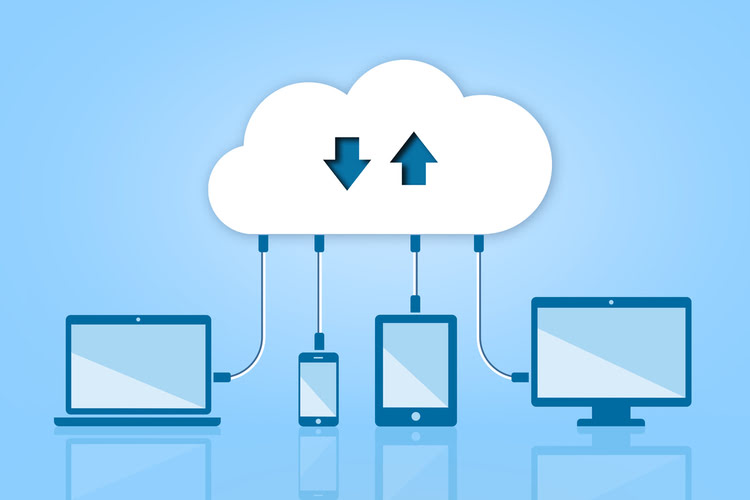One of the most distinctive features of the public cloud is the multi-tenancy model. This means multiple customers, or ‘tenants’, share the same physical hardware, storage, and network devices. Pega is the leader in cloud software for customer engagement and operational excellence. The world’s most recognized and successful brands rely on Pega’s AI-powered software to optimize every customer interaction on any channel while ensuring their brand promises are kept.

For such companies, the hybrid cloud-deployment model provides a smoother transition with a mix of on-premise and cloud options. As the name suggests, Private Cloud lets you use the infrastructure and resources for a single organization. Private clouds are more costly than public clouds due to their costly maintenance.
Making the Right Choice for Cloud Deployment Models
These include items such as your networking bandwidth, computational capabilities and data storage. We’ll look at the outlined deployment types as well as key details that you need to be aware of, and hopefully help you to figure which cloud deployment model is best for you. A cloud deployment is an installation of hardware and software that is accessible over the internet on a specialized platform.

AWS cloud offers a massive range of services to assist its users in managing and automating their operational workloads. Increased productivity, consistent business growth, reduced overall cost, and higher security are some of the benefits that cloud integration initiates. Cost is a pivotal factor for businesses when deciding on an AWS deployment model. Each model – public, pros and cons of cloud deployment models private, or hybrid – comes with its own cost structure, which can impact not only the immediate budget but also long-term financial planning. Navigating the realm of cloud computing and selecting the optimal AWS deployment model can be challenging. It requires a balance between your business’s operational needs, budget considerations, and future growth predictions.
What Is A Cloud Deployment Model?
Let’s explore real-world examples of businesses utilizing each AWS deployment model to get a better understanding of their practical applications. While the public cloud offers cost-efficiency and scalability, the private cloud prioritizes customization, control, and enhanced security. Businesses should weigh these differences carefully when deciding which model best aligns with their operational needs and priorities.

Each comes with unique features that help businesses boost their productivity. See how Virtasant has helped other companies optimize and improve their journey to the cloud. Definition of responsibilities during the whole migration process from definition of concepts—testing—transfer—takeover, etc.
Cloud Computing Models
Depending on the legal situation in the country of the cloud customer, the contracts have to be negotiated and regularly adopted if necessary. Because network connectivity is the basis of the successful access to the cloud services, it is essential that the ISP (mostly the CSP will be accessed via Internet) will offer the required service quality and availability. All contractual defined service levels with the CSP cannot be provisioned if the network is not available in the required condition. It is ideal for companies wanting to maintain control over their business applications. However, they wish to get rid of constraints to manage the hardware infrastructure and software environment. PaaS delivers and manages hardware and software resources for developing, testing, delivering, and managing cloud applications.
Next, the four major cloud deployment models – private cloud, public cloud, community cloud, and hybrid cloud, were surveyed and described. This was followed by an analysis of the economics of cloud computing and the business drivers. It was pointed out that in order to quantify the benefits of cloud computing, detailed financial analysis is needed. Finally, the chapter discussed the major technological challenges faced in cloud computing – scalability of both computing and storage, multi-tenancy, and availability. • Customization – Unlike the public cloud deployment model, a company using a private cloud can customize its solution as per its own requirements. • Data and Security – The security of data is high, as in, only authorized internal personnel is allowed to access data.
Cloud Deployment Models
Rate limiting will help to manage the malicious actors and heavy traffic in order to manage growth and costs, giving developers more control over how they scale their applications. Business leaders – from Fortune 1000 companies looking to augment their services with AI, to AI startups on a mission to build the next culture-defining application – want to ship production-scale AI-powered applications. However, they face challenges like rapidly ballooning and opaque costs to deploy AI and ensuring customer data remains private and in compliance with regulations.
- And as that point comes closer, it’s time to get a realistic idea about what the cloud offers so you’ll know how best to take advantage of it in your digital transformation.
- SaaS solutions often come as ready-to-use applications, which are managed and maintained by the cloud service provider.
- You could set up cloud servers on-premise entirely under your control or use publicly available cloud services shared with many other users.
- Additionally, they define the relationships between your infrastructure and the users of your cloud.
- Cost is a pivotal factor for businesses when deciding on an AWS deployment model.
It’s similar to the hybrid cloud deployment approach, which combines public and private cloud resources. Instead of merging private and public clouds, multi-cloud uses many public clouds. Although public cloud providers provide numerous tools to improve the reliability of their services, mishaps still occur. It’s quite rare that two distinct clouds would have an incident at the same moment.
List the disadvantages of the public cloud model?
For small to medium-sized businesses, a public cloud is an ideal model to start with. And as your requirements change, you can switch over to a different deployment model. An effective strategy can be designed depending on your needs using the cloud mentioned above deployment models.
Client organizations do not have to use one of Pega’s cloud offerings to deploy their Pega applications. Developers can deploy Pega applications with their own on-premise infrastructure, although the client does assume most of the responsibility for the maintenance of this setup. In this topic, you examine the choices that Pega offers for cloud deployment. Vectorize also benefits from Cloudflare’s global network, allowing vector queries to happen closer to users, reducing latency and overall inference time. To this end, Workers AI attempts to ensure AI inference always happens on GPUs close to users (from a geographic standpoint) to deliver a low-latency, AI-powered end-user experience. Let us have a look at the characteristics of each cloud model and find out which one is the best fit for your company’s cloud-computing needs.
Can Cost Influence Deployment Model Choices
We collect functional and non-functional requirements to provide a solution that meets customer expectations and business needs. Thorough preparation includes steps toward developing the right strategy and making recommendations for implementing the project. You can pick different ones for different cloud infrastructure components.
